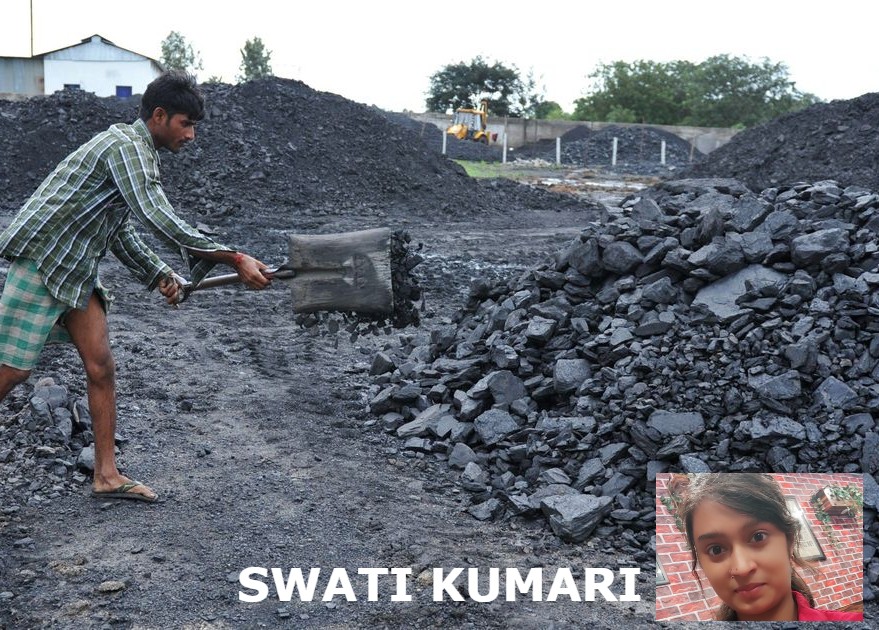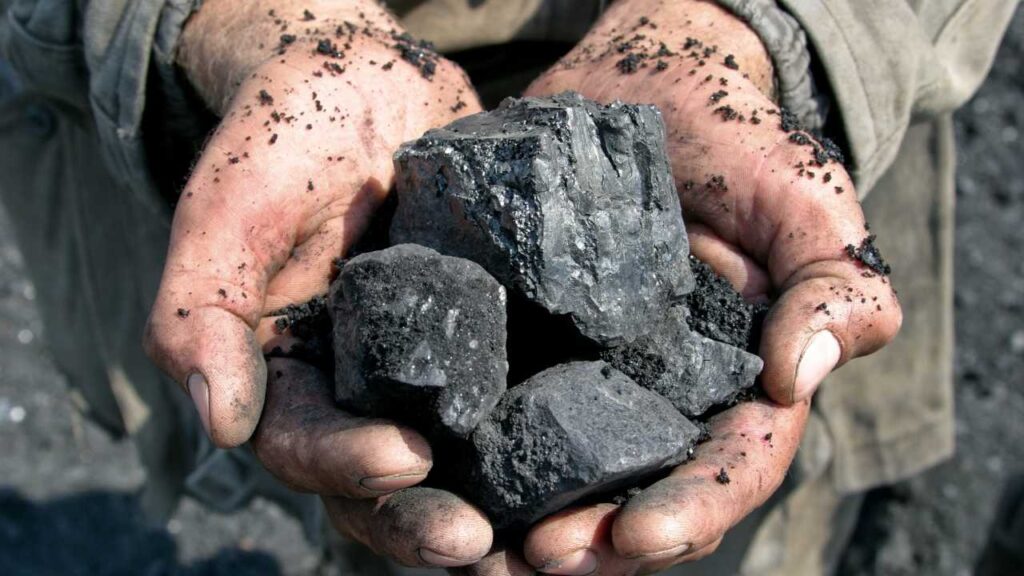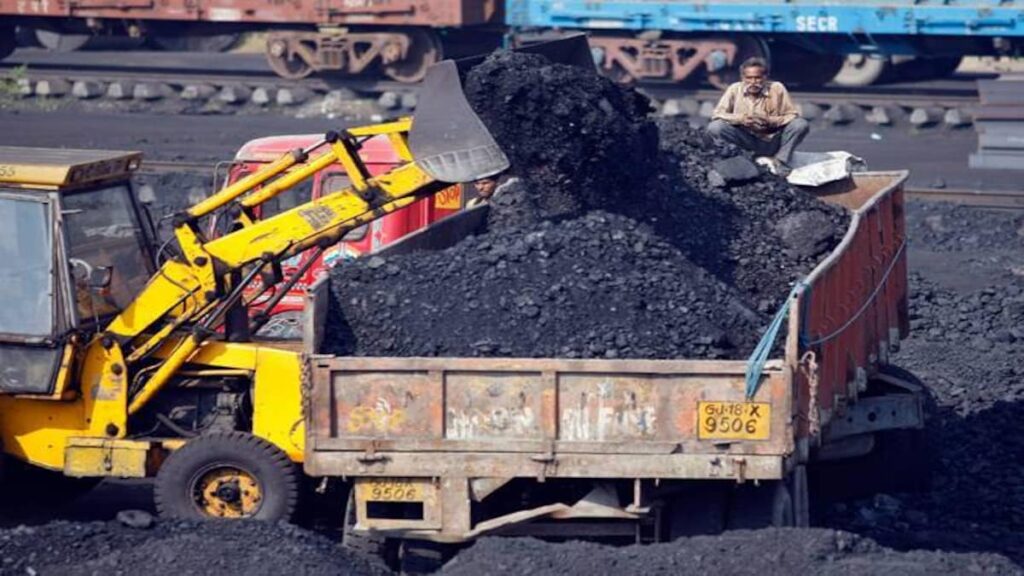“For Indian mining sector; present is tense and future could be imperfect”
-Mayank Aggarwa

“As the bell for computer class rang, everybody started running out of the computer lab; the teacher called back the students and told them to ‘switch off their respective ‘desktops along with the lights and fans’ of the lab.”Mostly, mentors tried to explain the efficient optimization of scarce resources.
But have you ever imagined what would happen in the case when our major contributor to our power-mix i.e. coal-stock gets exhausted and at the same time the international price of coal get increased many-fold? What would happen to the individuals that are sustaining their families on a work-from-home basis? To the manufacturing and heavy industries (steel, cement etc) that are indispensable- dependent on electricity for their functioning and had to incur heavy losses due to lockouts induced by pandemic? What about the situation of the service and IT sector where a major chunk of operationare dependent on electricity availability? The current chocking felt by the thermal-power plants is the warning signal that this issue needs urgent redressal.
COAL-CRISIS-BECOMING CRITICAL;-
According to the data by the central electricity authority 2018-19, approximately 70 per cent of our energy/power needs are met through coal, which is used to fuel thermal-power plants for generating electricity. Recently some thermal-power groups speculated that the average total stockpiles of coals left with them are barely sufficient to sustain for 4 days, whereas government sources claim stocks to be sufficient for 14 days with those plants. Moreover, out of the total 165GW [giga-watt] capacity, a total of 135GW has critical to super-critical levels of coal stock.
Coals are said to be black-diamond, not because of their intrinsic value but of the economic value attached with their results. Coals are non-renewable, non-replenishable- fossil fuels. Also, coal, being the single giant contributor to climate change accounts for nearly 46 percent of carbon dioxide emissions globally and 70% of total greenhouse gas from the power sector.

The rationale of recent exigency
There are stings of reasons being responsible for current pinch, some of which are-
- As our country took baby steps towards economic opening/recovery from the pandemic our consumption needs to be increased from 106 billion units in August 2020 to 124 billion units, a stark-upwards in demand needs coupled with supply-side issues led to this execrable situation.
- Further, with adding-up of more households [262.84 lakh]with mainstream electrification under various government schemes like SAUBHAGYA and the addition of more heating and cooling appliances had led to more energy consumption by household sectors.
- Also, Heavy-rains and flooding of coalmine areas had a severe impact on domestic production and timely delivery of coals to plants along with the failure of thermal plants for timely acquisition and buildup of stocks before the onset of monsoons.
- Additionally, the addition of more thermal-power plants has eventually pushed up demand for coal and coals overall contribution to power increased from 61.9% [2019] to 66.4%.
- Besides, importing coals has high costs attached with it. International prices of coal have tightened from the US $60 per-tons to $190 per ton therefore authorities/firms are refraining from importing or have postponed it as of now.
The above-mentioned points could be regarded as only the surface problems, the actual problem underneath it, is a probably deeper, tangled and more complicated one. The main issue is with the ‘power sector’. As per the reports of ‘Power Finance Corporation’ [PFC] on ‘Performance of Power Utilities 2019-20’, DISCOMS [distributing companies] owes more than Rs 2.16 lakh cores to GENCOs and GENCOs owe a total of Rs 20,000 crores to Coal India Limited [CIL]. It is aptly evident from the data that DISCOMS are in an extremely bad position, and also a reason for coal India falling short of working-capital requirements and credible reason for upwards-scaling of non-performing assets [NPAs] from the power sector.
Impending-Implication of shortages
Indian economy is a developing economy and it lacks fully-developed-energy-infrastructure, amidst it, power-crisis or blackout could severally-hit hard to its growth-targets and shake its performance. Likewise, if industries face electric shortage for a longer period then India’s economic revival, as well as recovery, could get delayed and some business houses might downscale their production levels. Its effect will not be noticed alone on one sector but, from household-individuals-to industries and industrialists-to economy and economists as a whole.

Way-forward:-
In consideration and tackling of the current problem, the central government along with states is in discussions and deliberations to bring more mines under the stream to boost supply. Although, this measure could help in meeting the short term demand-crunch, but isn’t a long-term solution. It is in line with the fact that our dependency on coal could not be possibly met in a short span of a day or two, however, with a proper roadmap and strategic action plan coupled with sufficient resources this could be achieved in the medium and long term. Given-below are some of the ways which could be apt in a given circumstance
In the Short-term, the focus of the concerned authorities should be primarily to meet the demand needs and not let the supply chains get disrupted. This could be done through domestic increased procurement and distribution of coal or through importing, side-keeping the raised prices for a while. Also, coal India Limited should be granted more autonomy [by the government] in its operations to plough back profits which could be ultimately be invested for expansion and growth purposes.
For the medium and long term policy measures, the focus should be on installation and procurement of energy through viable replacements of coal i.e. solar power and windmills. Due to the favourable geo-climatic location, India receives an abundant quantity of sunlight and wind year-round. Although these alternatives have high installation costs, ultimately considering environmental costs coupled with government subsidies it’s relatively cheaper. Installation of nuclear power plants for energy generation through nuclear fission could also be considered as a favourable alternative.
An add-on to this could be waste-to-energy treatment using garbage /solid-liquid wastes to produce electricity. In India, more than 150,000 tons of solid waste are generated every day, but only 70% of this is collected and merely 20% of it is used, rest is either dumped untreated in landfills or burned to produce air pollution. All these listed alternatives are a clean source of energy and don’t produce co2, but needs more research and development in particular areas for addressing their cons.
To aid the ailing health of the power sector, the administration & treatment should begin from DISCOMs, for instance, ‘The Gujarat Model’, is one such case that offers exemplary efforts to solve this problem. Furthermore, there is a need for a competent team like CMD ‘Sutirtha Bhattacharya’, who contributed immensely to solving the coal crisis of 2014.
Conclusion
The pinch of the current coal crisis is a flashback of a crisis of 2014. Now it should be considered as a warning bell and it is high time that we take necessary lessons from this and do not go back and repeat the same mistake by producing and consuming more coal. The crisis of 2014 was solved through meticulous planning and execution, however, the problem of DISCOMs persists, somewhat failure of the UDAY scheme [ Ujjval DIOSCOMs Assurance Yojna] is confirmation of it. A transition to more sustainable, environment-friendly and renewable sources is needed now. The government along with the stakeholders should go forward considering its environmental commitment and frame policies that should be duly acknowledged, adaptable and addressed while preserving the livelihood of coal-dependent families.

Very informative